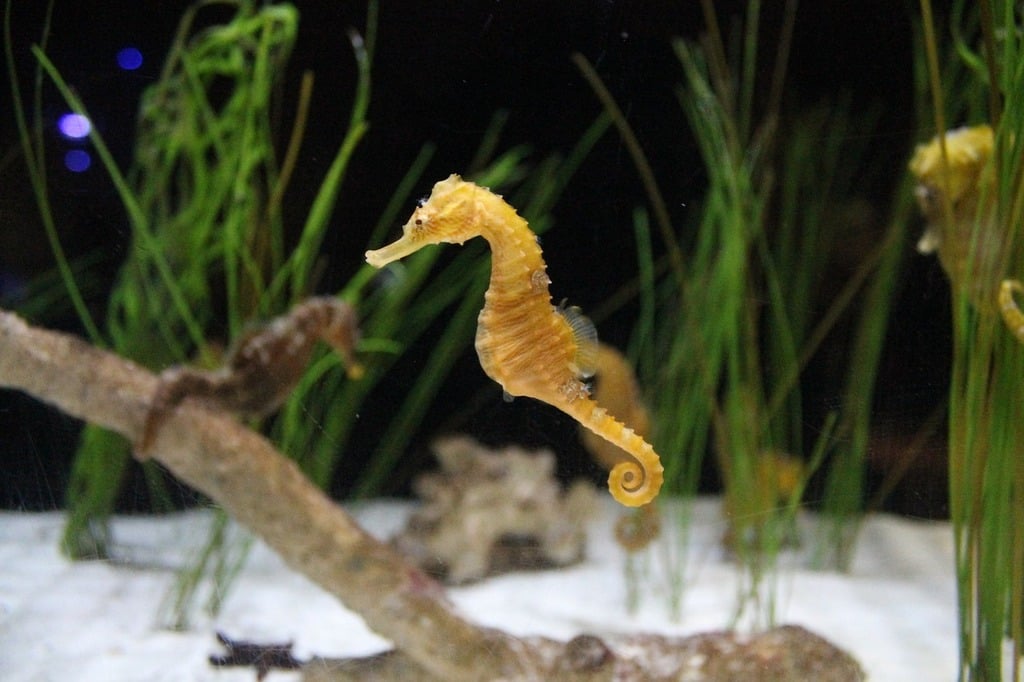You should know their requirements if you want to keep seahorses and pipefish in your aquarium. See more about this Seahorse and Pipefish Care Sheet. Seahorses and pipefish belong to the family Syngnathidae, which includes sea dragons as well.
These fish have appealing looks and temperaments; many marine aquarists keep them. They are species that need specific conditions and care, making them quite different from the easily available fish.
In this Seahorse and Pipefish Care Sheet, providing care to maximize the well-being of such creatures, we will focus on parameters such as habitat type and dietary profile, tankmate compatibility, and routine tasks.
Understanding Seahorses and Pipefish
Species Overview
Within the class of Syngnathidae, the Seahorse and Pipefish Care Sheet are classified along with the pipefish family.
These species can be observed in different environments of the Caribbean and Indo-Pacific oceans. These include the following:
Seahorses Kelloggi, Lined, Kuda, Brazilian, and Tiger Tail.
Pipefish: Banded, Bluestripe, Dragon Face, and Green Pipefish.
Seahorses have a diverging format of swimming since they assume a vertical position while at the same time utilizing their prehensile tails to grasp towards plants or decorations; on the other hand, pipefish are elongated fish that swim in a marine style, more seeking out structures for support. However, they are still sensitive and prefer mild currents at minimum.
Difficulty of Care
Seahorse and Pipefish Care Sheet are upper-level species and are more suitable for seasoned aquarists. Seahorses and pipefish are complicated to care for due to their food and environmental requirements.
Lifespan and Size
The pipefish and seahorses display diversity in lifespan and size of the same species; with sufficient maintenance, they can survive for a few years. Depending on the species, seahorses normally measure between 20 and 30 cm in height, while pipefish may extend up to 46 cm.
Habitat Requirements
Minimum Tank Size
Larger tanks are preferable because they provide a bigger buffer and diminish the possibility of water changes. Conditions of water Taking care of the water conditions is one factor that determines the health of Seahorse and Pipefish Care Sheet.
The following are the sleeping parameters:
Temperature: 74-80 F; Specific Gravity: 1.020-1.025; PH: 8.1 to 8.4 (depending on species). Constant monitoring of the water parameters is indeed critical for the health of the horses and pipefish.
Filtration and water movement: A good filtration system is vital to maintaining water quality. Since seahorses and pipefish are poor swimmers, using a filter that produces weak to moderate water flows is necessary. Normal internal power filters or external canister filters are good for maintaining good water quality without too much flow.
Décor and hiding spots: Live rock is also artificial, which will suffice. Use hitches that seahorses and pipefish will utilize to cover several hiding spots. Make sure to use artificial plants, coral, and live stone ecosystems of these creatures; however, avoid live coral as it can sting and irritate these fragile creatures.
Feeding and Diet Diet Requirements
Like their pipefish cousins, seahorses are obligate carnivores and biologically require a protein-packed diet. Their diet can consist of Frozen mysis shrimp and frozen brine shrimp
Live baby brine shrimp (Use occasionally as treats) Feeds should be given 2-3 times daily with small portions to curb overfeeding. Leftovers should be disposed of promptly to improve water quality.
Transitioning to Frozen Foods: Although horses can be taught to accept frozen foods, pipefish may be difficult to compare. They tend to live on food in the beginning, so a variety of foods should be offered to them to get them started. However, several pipefish can be conditioned to start eating frozen foods later if slowly introduced.
Compatibility with Other Tank Mates Suitable Tank Mates: When choosing tank mates for seahorses and pipefish, consider using those that will not attack or compete for food. Gobies, Blennies, Cardinals, Filefish, Peaceful invertebrates. These are only a few of the species mentioned. Above, Check the compatibility of new tank mates before adding them to your aquarium.
Species to Avoid: Do not keep seahorses and pipefish with aggressive fish or fast swimmers that will outcompete them for food, such as Damselfish Dottybacks and Hawkfish Wrasses. Such fish can cause stress to seahorses and pipefish and lead to subsequent health problems.
Maintenance and Care Routine Maintenance: Proper maintenance is required for the well-being of your seahorses and Pipefish. Replace tank water once every ten days to monthly to prevent dirt from building up. Additionally, make sure to dispose of any uneaten fish leftovers each day.
The Process Of Rearing Seahorses Alongside Pipefish
Breeding scientists have long acknowledged that male seahorses possess an external brood pouch capable of carrying eggs until they are ready to hatch, and this characteristic makes them quite different from all other types of fish. With time, other fish have developed similar brood pouches but not in such an extreme form.
Raising Fish
Optimal conditions, breeding, protection, and appropriate feeding of both pipes and seahorses are required for these fish to breed.
Mating Dances Alongside the Process of Getting Pregnant
Seahorses have quite a pattern of getting pregnant; it is a two-part process that lasts for days. At this reproduction stage, the male can attempt to fertilize more fertilized eggs, and the female has graciously decided to deposit them into the male’s brood pouch.
During this process, the male possesses the ability to change color and perform many different movements with another male in the context of courtship; after all, the female seahorse uses an ovipositor to insert and fertilize after attaching the eggs to the male.
Health Problems That Are Common in Seahorses and Pipefish
Signs of Stress or Illness
In consideration of their ancestry, seahorses and pipefish, which are linked fish species, can get sick and show symptoms such as:
Poor water quality
Stress
Appetite loss
loos
Visible sores and lesions
Severe changes in color
These signs indicate stress or illness in Seahorse and Pipefish Care Sheet; if you see any signs, it is advisable to determine the water quality and make the necessary adjustments.
Mitigation measures
Most importantly, stabilize the water parameters, carry out water changes at regular intervals, and provide a balanced diet to the fish to ensure no complications to health. It is advisable to keep new fish in quarantine tanks so they do not introduce diseases to the main tank.
Conclusion: Seahorse and Pipefish Care Sheet
Suppose you have the ward for a considerable amount of time and dedicate a reasonable amount of effort to caring for seahorses and pipefish. In that case, it is the best experience for any aquarist. Besides this, following the outlined guidelines in this seahorse and pipefish care sheet, an environment encourages these fish to thrive.
Always monitor the water parameters and nutrition alongside the choice of tankmates to guarantee tissue and well-being. Seahorses and pipefish are beautiful creatures, and with a little work, they can be the jewels of your aquarium, delighting every observer.
FAQs: Seahorse and Pipefish Care Sheet
What Is The Minimum Tank Volume For Keeping Seahorses And Pipefish?
It is advisable to start with a 29-gallon aquarium or larger since these would provide more stability.
What Food Do Seahorses And Pipefish Eat?
These creatures eat a diet containing frozen mysis shrimp, frozen brine shrimp, and, as a treat, live baby brine shrimp.
Can Seahorses and Pipefish Be Housed With Other Fishes?
Yes, but gentle fish who will not bully or compete too much for food must be selected to form the community.
What Frequency of Water Changes is Recommended?
Water changes of 10–25% should be carried out every two to four weeks as a minimum, depending on the biological load of the tank.
Is Breeding Seahorses and Pipefish Difficult?
They have their peculiarities in reproduction, which, among other factors, determine the success or not of spawning these fish.







